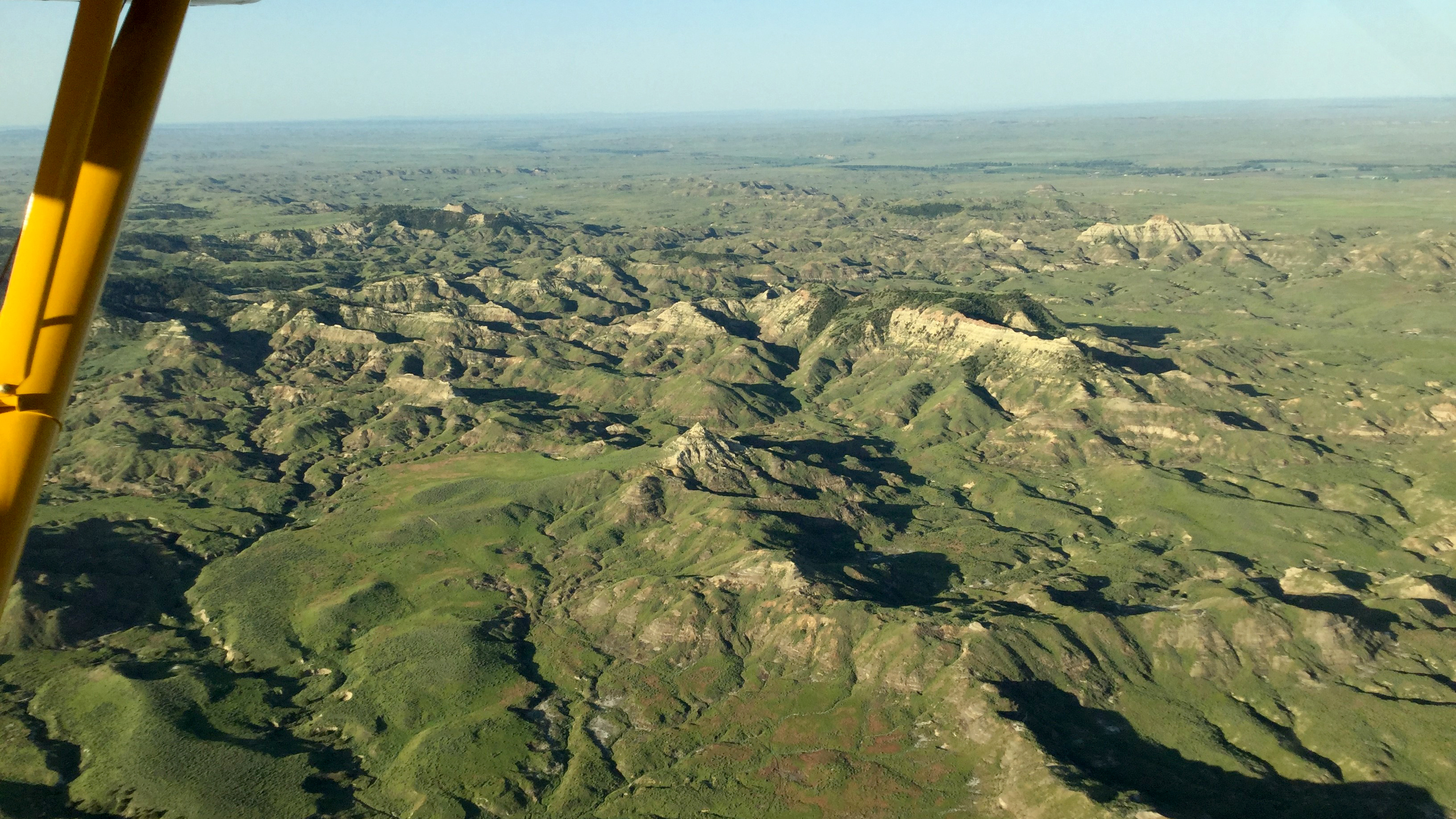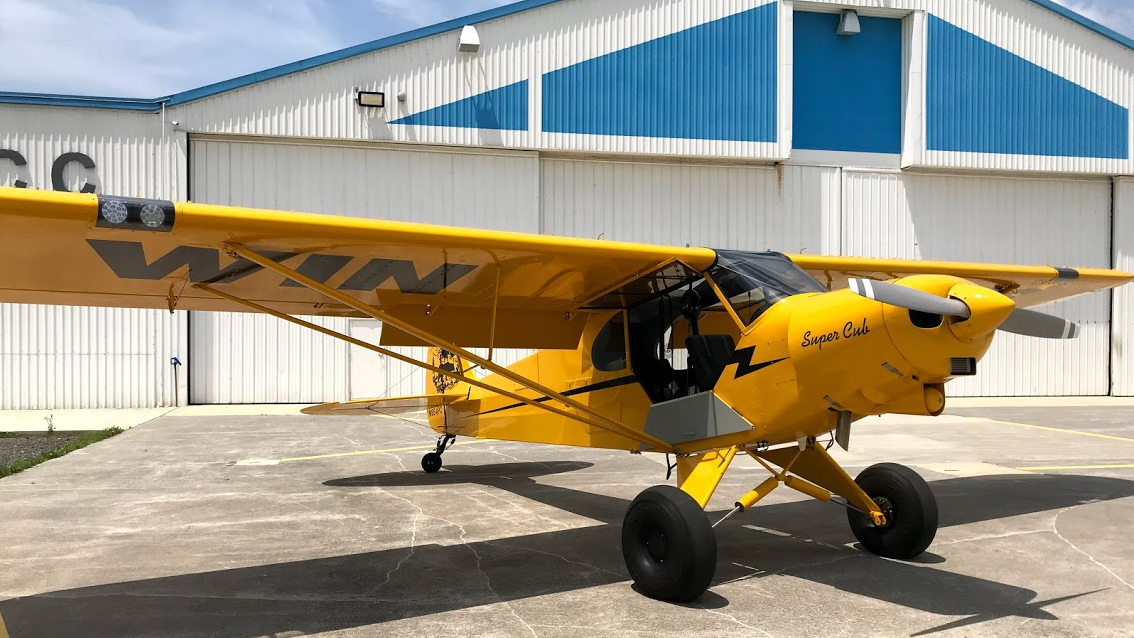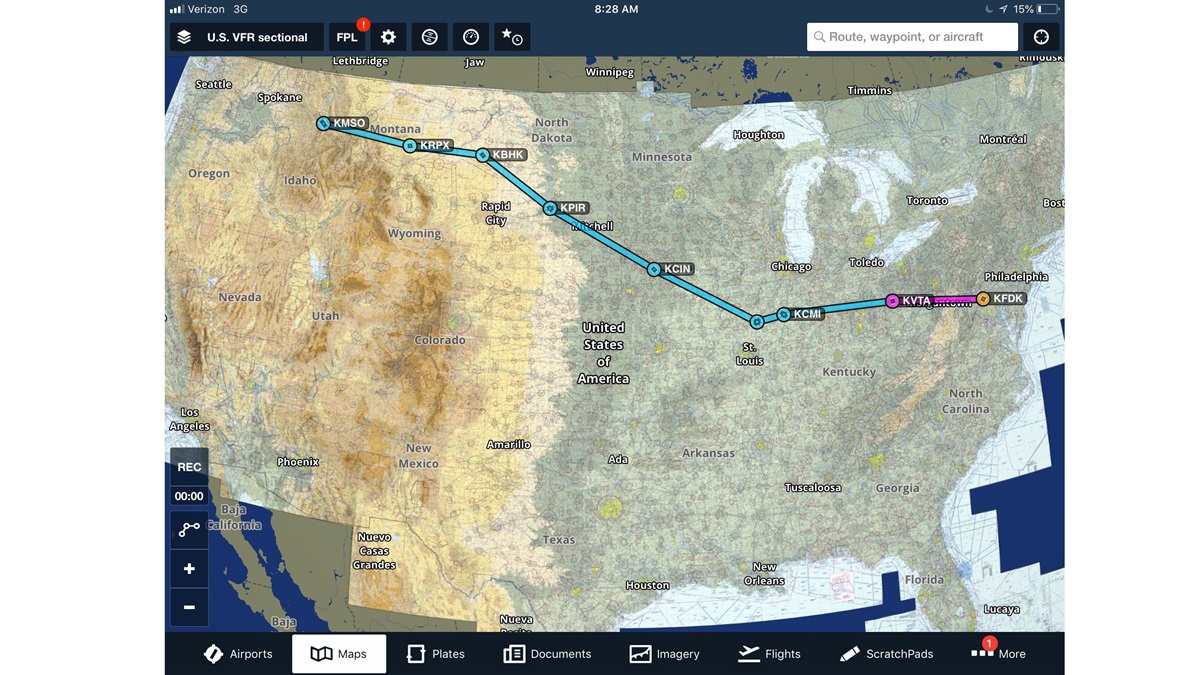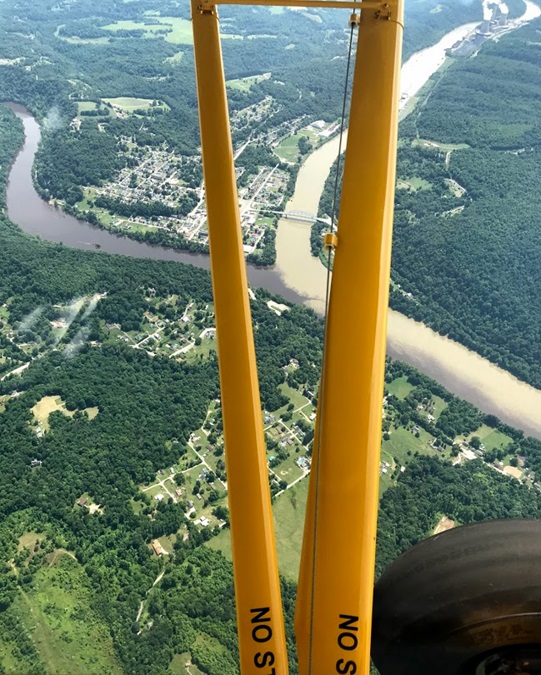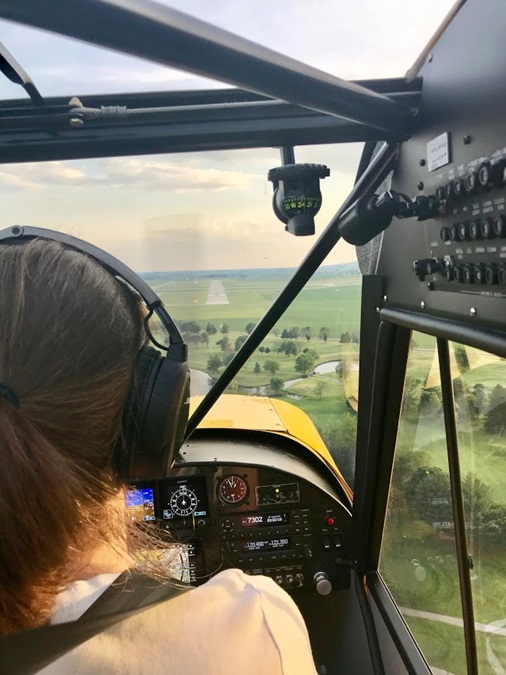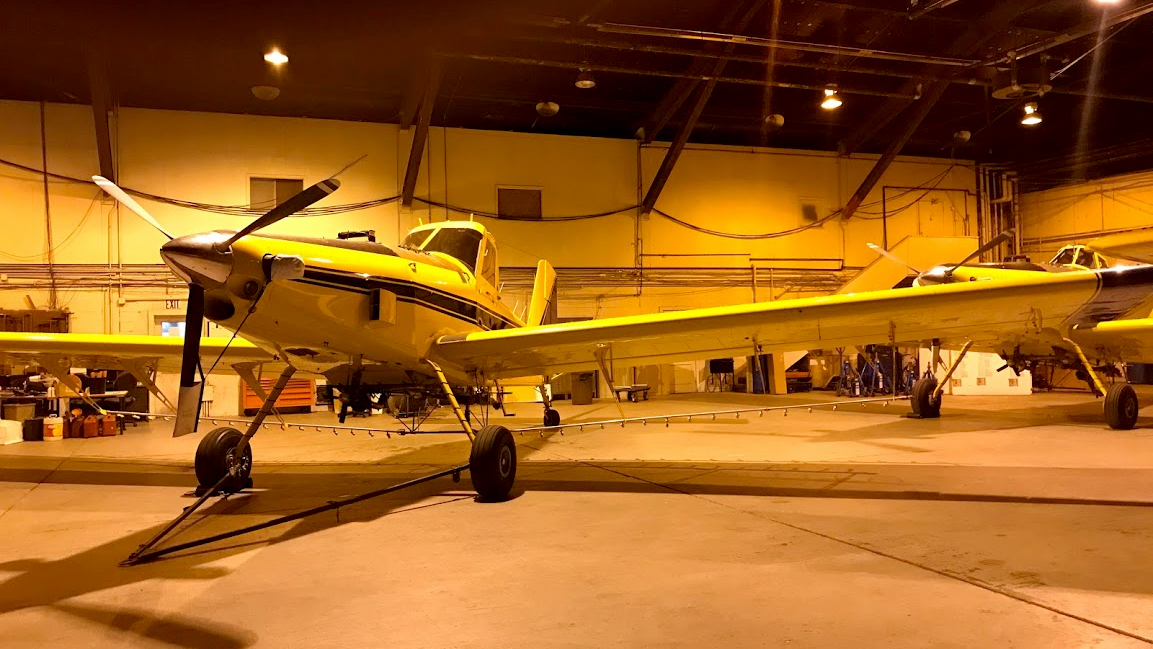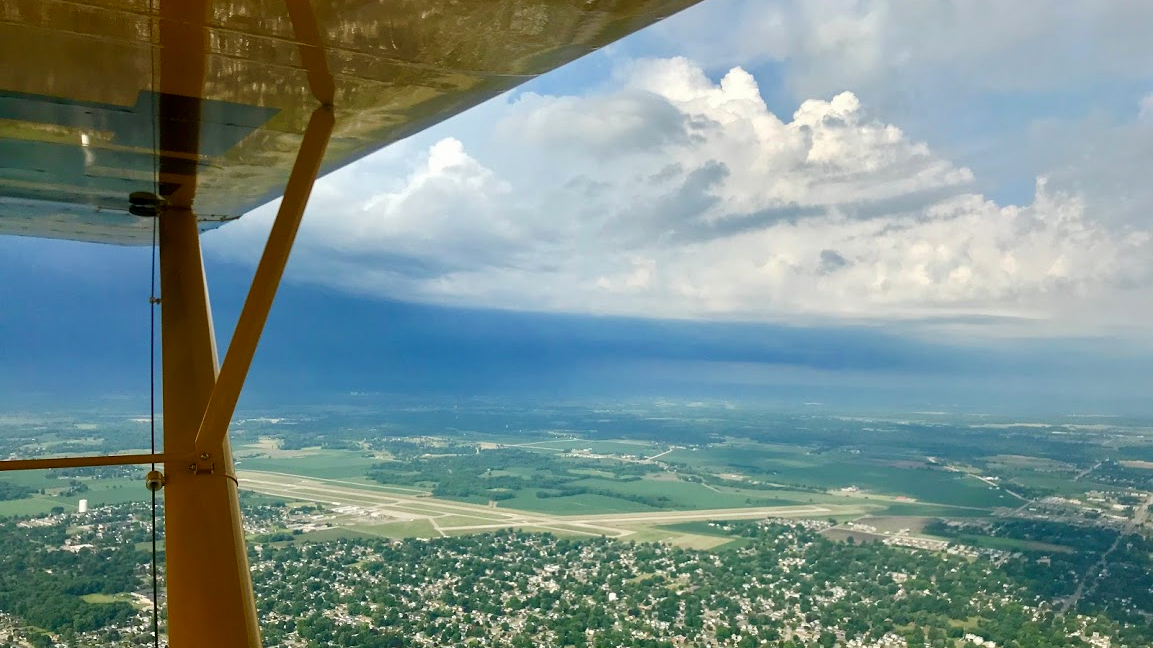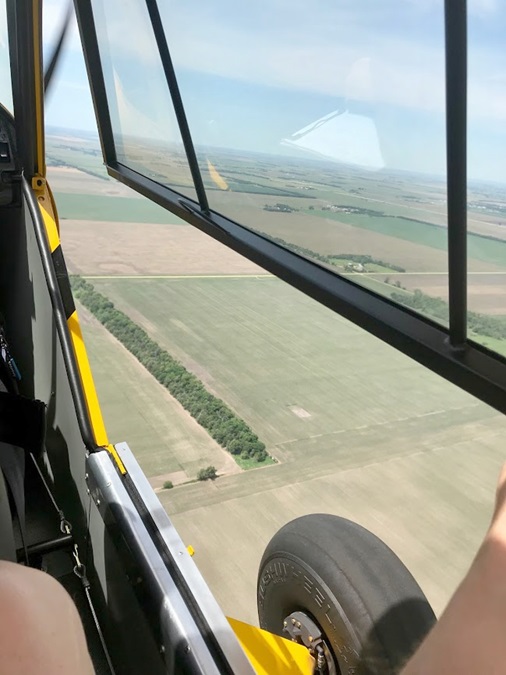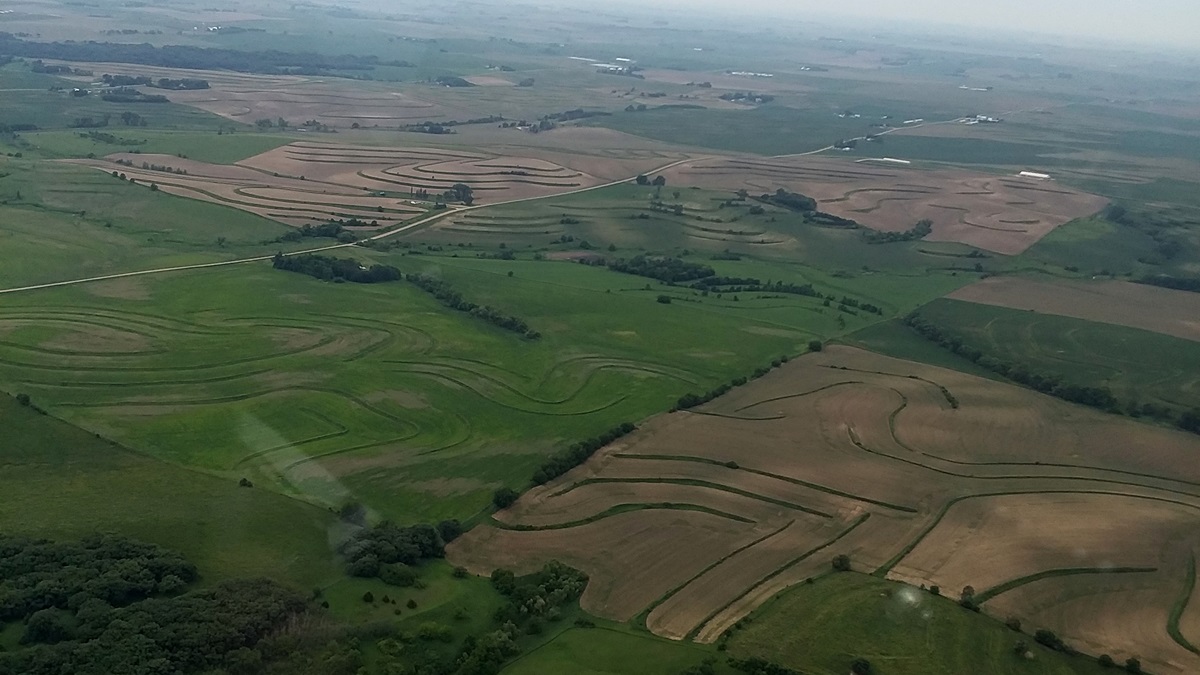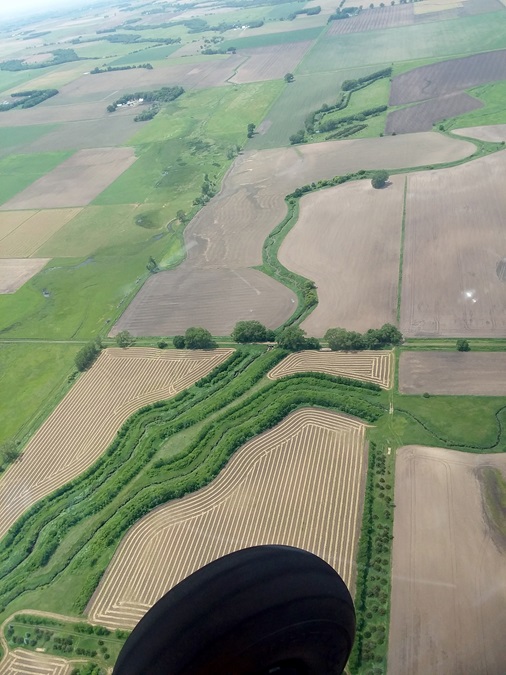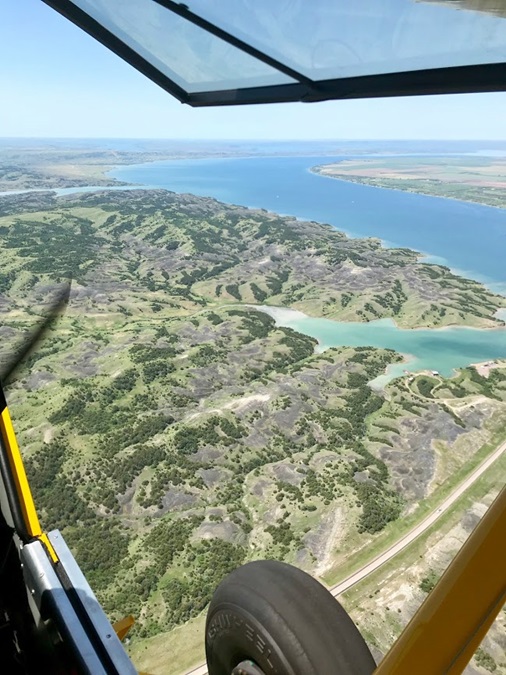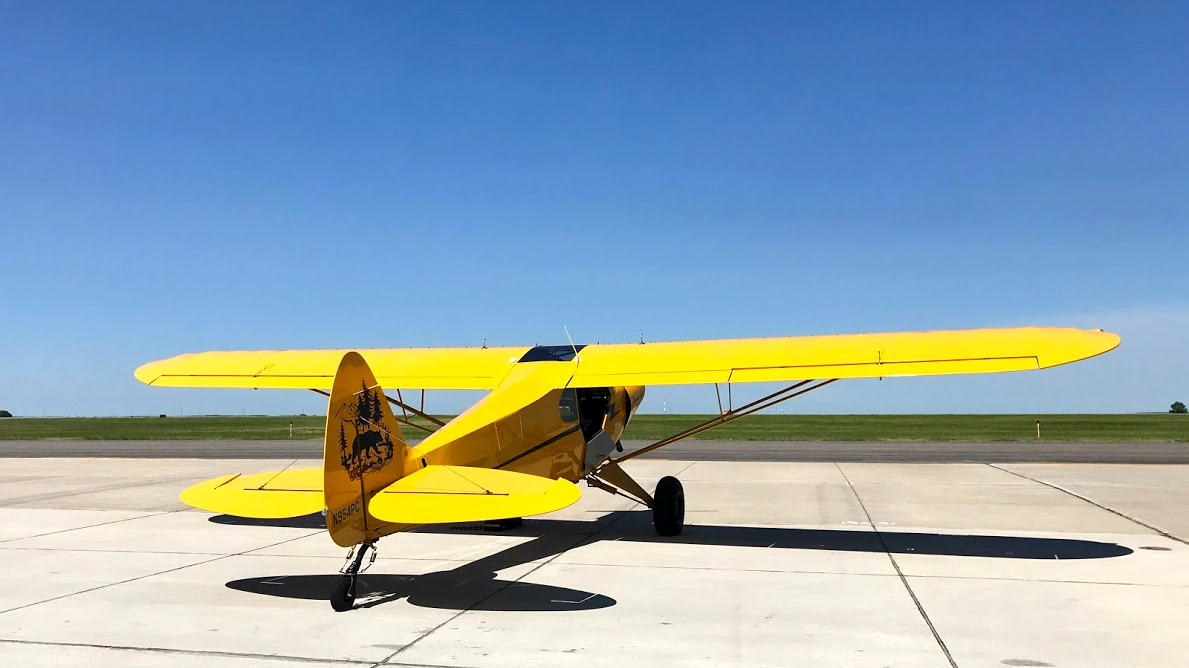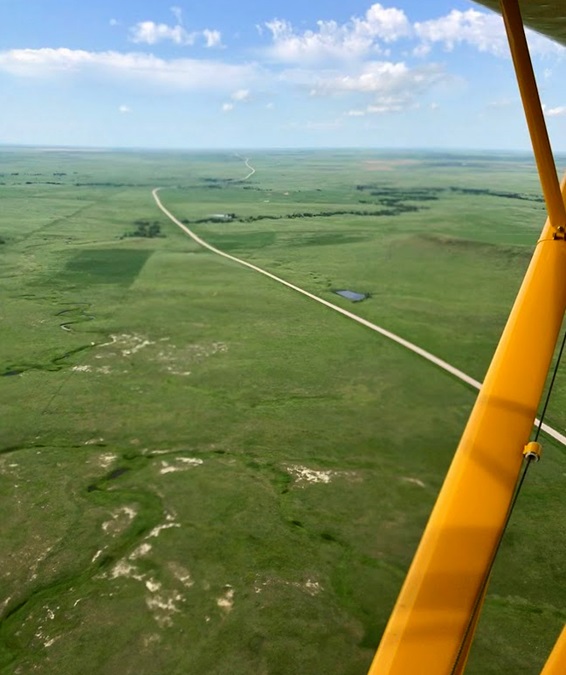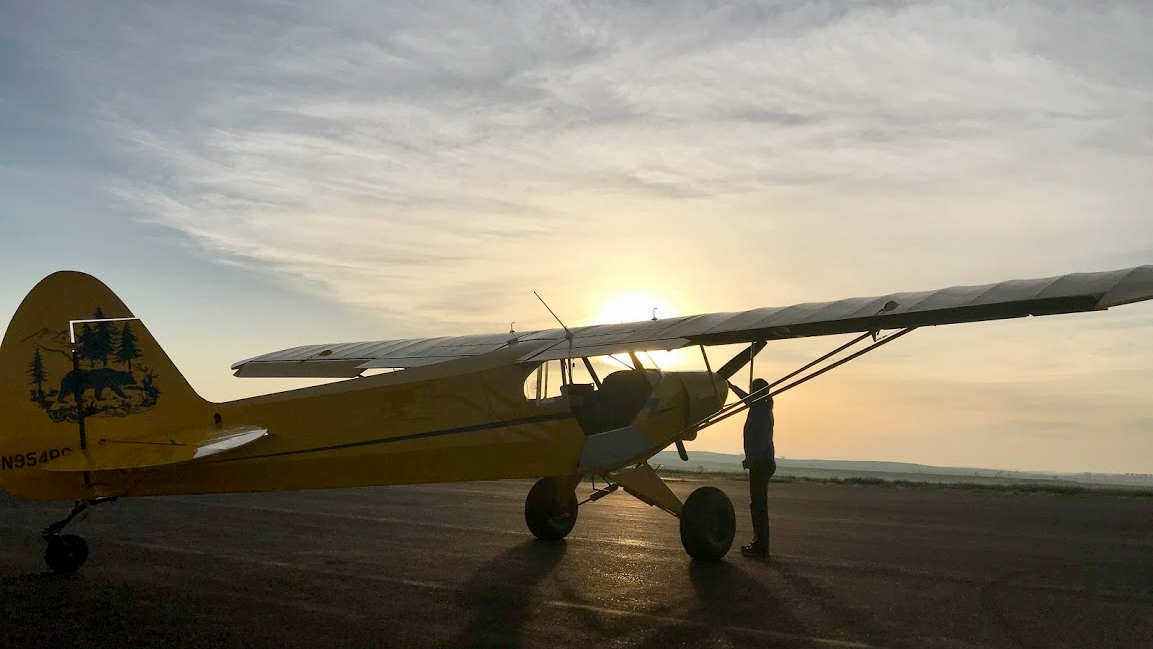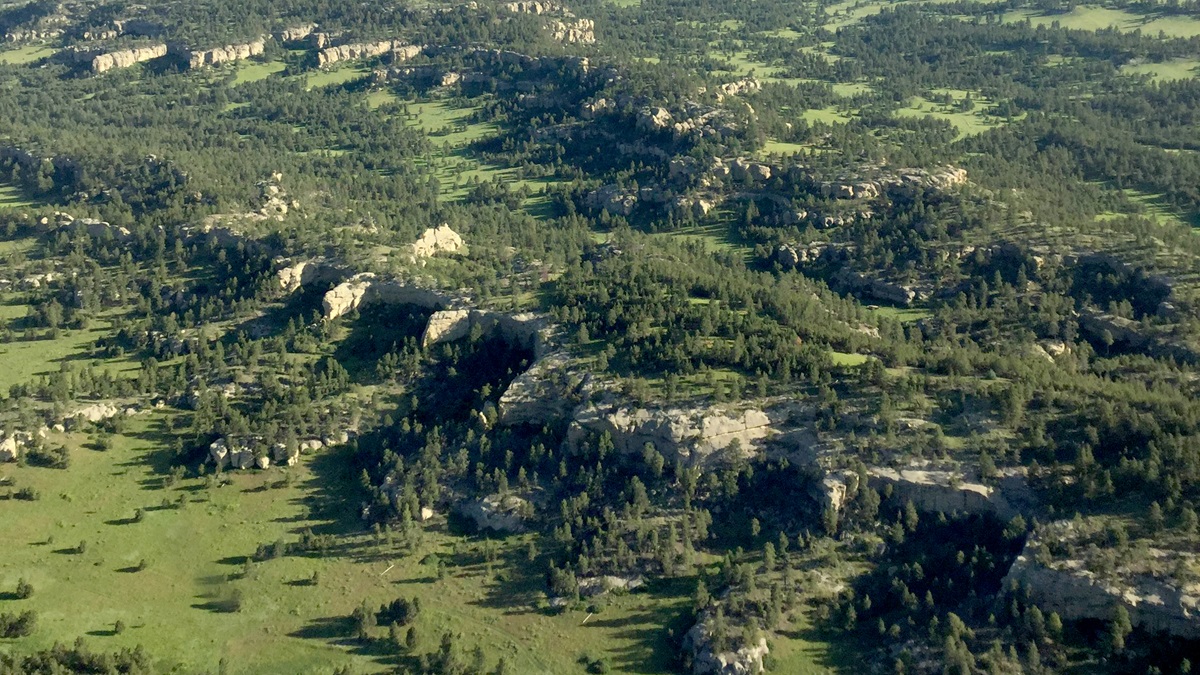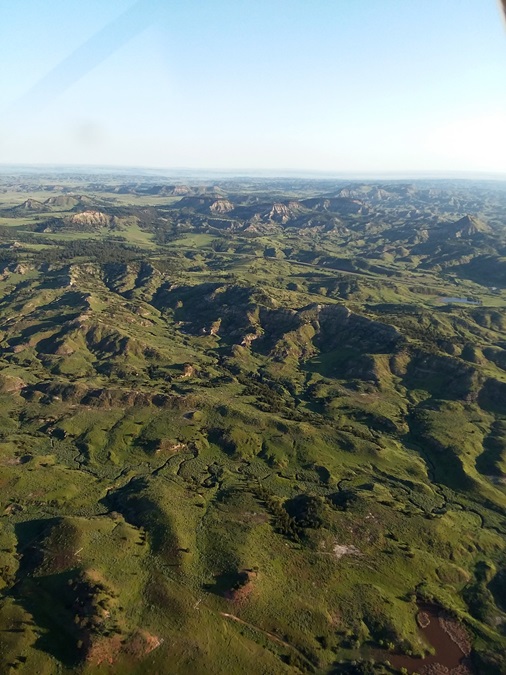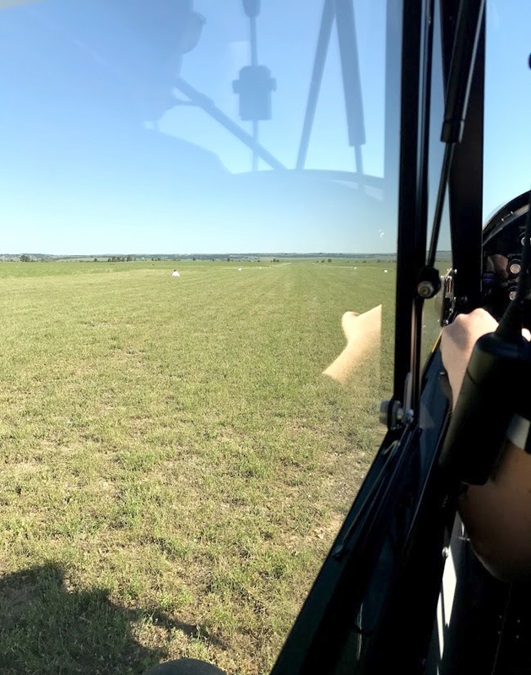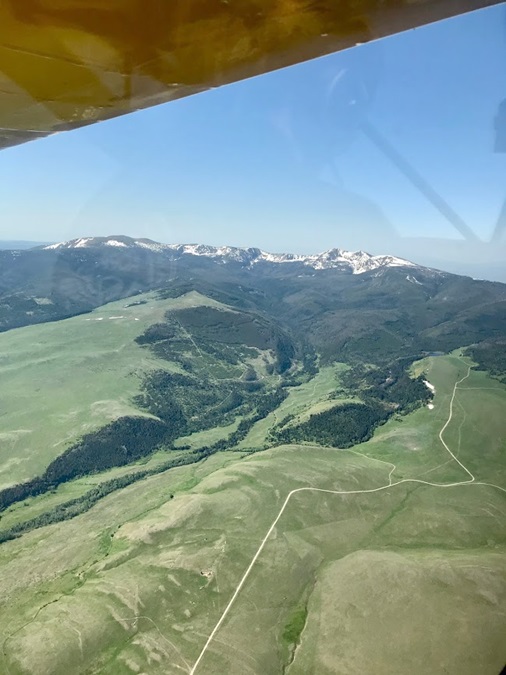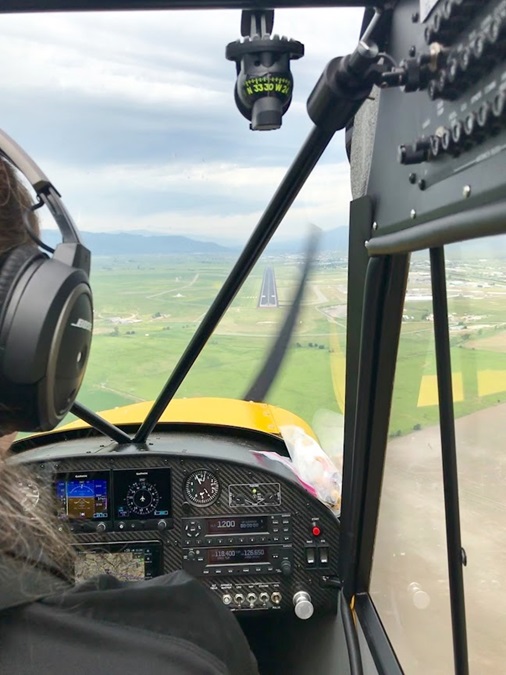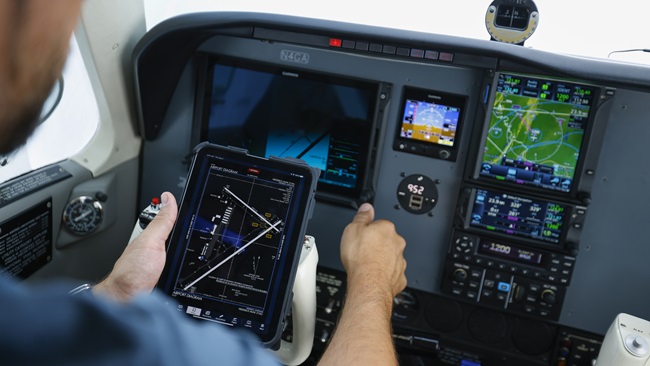Goin' Cubbin'
Explore the US from a couple thousand feet above
Wrapped in a tube-and-fabric Piper Super Cub, window and door open, flying low and slow over the countryside is an incredibly intimate way to explore the United States by air from the Appalachian Mountains across the Great Plains to the Rocky Mountains. Cars pass by on interstates (literally, sometimes they pass the Super Cub), trains meander around mountains, farmers spray their crops, boaters enjoy a warm day on a lake, deer run free on plateaus, and cattle graze on ranches—all going about their business seemingly unaware of their observers in the air.
Coworker Janet Davidson and I are flying AOPA’s 2019 Sweepstakes Super Cub across the country from our Frederick, Maryland, headquarters to Missoula, Montana, on a journey that fills the senses. Hazy skies clear out as we cross the Appalachian Mountains so that we enjoy unlimited visibility and smooth air over Ohio’s farm fields.
One of the advantages of the Super Cub is its slow speed—about 100 mph cruise. A solid wall of precipitation between us and our planned fuel stop in Champaign, Illinois, dissipates in the nearly three hours it takes to get there, allowing us to land in the calm just before sunset to refuel. While en route, the aera 660 proves useful not only in monitoring radar but in getting weather updates at individual airports along the route in case we need to deviate or land early.
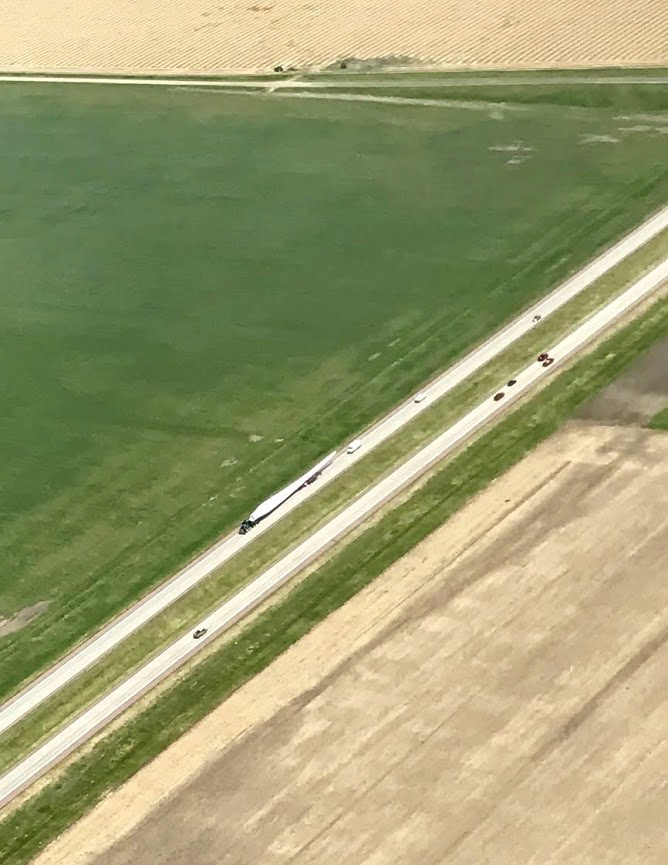
Giant wind farms dot the route across the Midwest. The wind turbines are an impressive sight from the air, but their massive size really comes into perspective as we watch a semitruck haul one blade along the interstate in Iowa. Blades can range from 116 feet to more than 180 feet—five to eight Super Cubs could line up on the blade nose to tail!
After flying over flat farmland for hours, Lake Red Rock just southeast of Des Moines, Iowa, looks like an oasis. On a warm summer day in Maryland, the lakes would be teeming with jet skis, sailboats, and speedboats, but Lake Red Rock is deserted on this beautiful mid-morning Friday. Everyone must be at work, I surmise, reminding myself how fortunate I am to be at work in the Super Cub.
As the temperatures climb and cumulus clouds fill in, the Midwest’s humidity permeates the cockpit. It doesn’t take long for Davidson and me to open the Super Cub’s window and doors, letting in the rushing wind that feels like a breath of fresh air as it rustles my clothes like riding on a motorcycle. This is what flying low and slow in a Super Cub is all about!
Farmlands turn into wide open fields as we cross over reservations and ranches in South Dakota; houses and towns are nearly nonexistent. Rocky hillsides line the west side of Lake Sharpe, its waters ranging from turquoise to brilliant blue, as it snakes up to Pierre Regional Airport. A few sailboats and speedboats take advantage of the hot day to be out on the water. The Super Cub looks right at home on Mustang Aviation’s ramp, green grass beyond it and cloudless blue sky above. The only aircraft perhaps more fitting on the ramp would be a North American P–51 Mustang. Inside the fixed-base operation, a collection of paintings depict Mustangs running, one of which includes a P–51 flying behind the stallions as if to circle them up. The winds gust from 11 to 17 knots while we are at Pierre, a calm day according to a Mustang Aviation receptionist who explains that winds can howl at 60 miles an hour over these flat lands. The next leg to Montana will be just as sparse, the attendant says, noting that in this part of the country, one’s nearest neighbor might be 15 miles away.
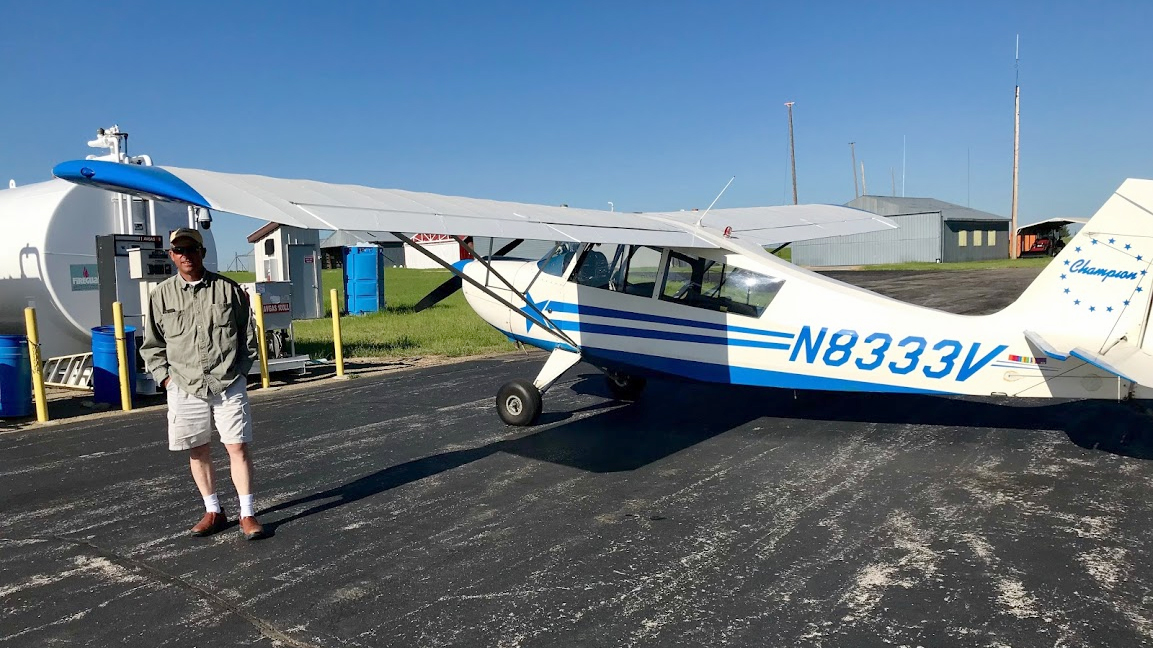
This remote but beautiful land gives way to numerous oil rigs in southeastern Montana before turning once again to ranches. Herds of cattle and even a couple of flocks of what appear to be sheep graze the land. In Roundup, Montana, the smell of pine fills the Super Cub on approach and landing. We chat with a rancher who also stopped in to refuel after surveying his property from a blue-and-white Citabria. The 27,000-acre ranch has been in his family since his great-grandfather began ranching in the early 1900s, and the airplane saves time while he checks on his herds over 42 square miles of land.
After covering more than 1,000 nautical miles of mostly flat land across the United States, Montana features dramatic terrain changes—from flat ranches to buttes and badlands to snow-capped Rocky Mountains reaching more than 8,000 feet msl, prompting Davidson to recall the film, A River Runs Through It. It’s truly a feast for the eyes as we fly along mesmerized by the sights, pointing out small lakes shaped like sharks, deer running, or a train winding around a mountain.
After two-and-a-half days of flying over 1,732 nm (1,993 statute miles) of this great country, from the East Coast to the Mountain west, I feel more connected to this great land, more appreciative of the various industries that it supports and the impressive air, rail, highway, and water systems that connect it all. America truly is beautiful.
